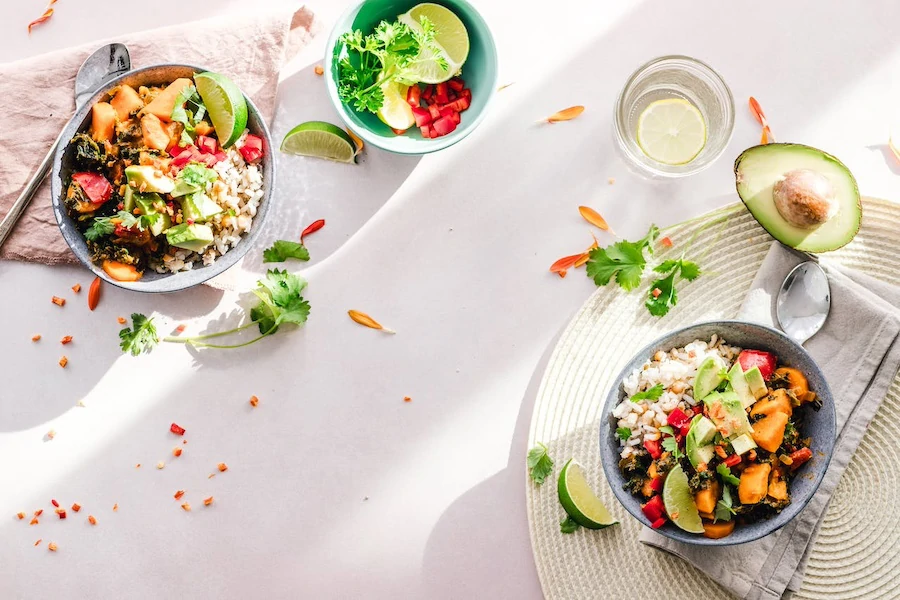
Thanksgiving is a time of giving thanks along with delicious food, drinks, desserts, and memorable moments with loved ones. Unfortunately, it can also be a time in which a lot of waste is produced. There are some simple ways you can be more eco-friendly during your Thanksgiving holiday without having to give up your beloved Thanksgiving traditions.
So, what are some tips to celebrate an eco-friendly Thanksgiving?
Eco-Friendly Thanksgiving Tips
1. Rethink the Menu
Think back to how much food you usually cook. Yes, having tons of leftovers are great, but how much actually gets eaten? Does your turkey need to be THAT big?
Plan accordingly to how many guests you will be cooking for and shop conservatively. Try to eliminate those dishes from the spread that don’t get completely eaten. This will significantly reduce the amount of food waste you produce and also save you some money for those other holidays right around the corner.
2. Shop Plastic-Free
When you make your initial haul for Thanksgiving food shopping, go plastic-free and eliminate the need for an excessive amount of plastic shopping bags. Reusable shopping bags are durable and are perfect for hauling around heavy amounts of groceries.
Ever get annoyed with those thin plastic produce bags? Reusable produce bags made from organic cotton will save you the hassle of any torn plastic and potential produce mishaps. You can also bring your own mason jars or reusable containers to the market and shop fill them up with dried goods than buying pre-packaged food covered excessively in plastic. If you absolutely need to buy food that is prepackaged, look to for recyclable packaging.
3. Choose Locally Grown and Organic Foods
One of the best ways to ensure an eco-friendly and healthy Thanksgiving is to choose organic and/or locally grown foods. By opting for locally grown foods, you are reducing your environmental impact avoiding foods with a high carbon footprint in their production and shipping processes.
Organic foods are healthier and safer to eat. They do not contain any synthetic chemicals used during the farming process such as fertilizers or pesticides. They also are free from any genetically modified hormones or additives. Head to your local farmer’s market to buy your turkey, so you know it’s free-range and organic. This may not be the cheapest option when compared to other brands, but you can ensure it was bred in an ethical and sustainable way.
4. Compost Food Scraps
Once your bellies are full and the guests are gone, the clean up begins. Instead of throwing out all of your food scraps, you can separate and compost them. Composting is nature’s taking organic waste matter and redistributing back into the soil so it can naturally biodegrade and add nutrients back to the earth. Some compostable items include fruit and vegetables, dairy products, grains, bread, eggshells, coffee grounds and filters, and even meat and bones.
5. Securely Store Leftovers
We all know that one of the best parts about Thanksgiving is the leftovers! The more efficiently you can store your Thanksgiving leftovers, the longer they will last too. Plastic, paper, and styrofoam are not the most eco-friendly and efficient way for food storage. Chemicals from plastic may leach into your food and are definitely not safe in the microwave.
There are many reusable storage containers made from eco-friendly materials including glass, silicone, and stainless steel. Some brands even make reusable food storage wraps made from beeswax, so it’s completely biodegradable after a full year of use. Mason jars are my all-time favorite way to store food in the fridge and freezer.
6. Donate Leftovers
Did you know that more than 42.2 million Americans live in households that limited access to adequate food? In the spirit of giving and the holiday season, you can donate your food to those in need.
Have a stockpile of canned pumpkin sitting in the cupboards? Donate your canned foods to a local food pantry. Contact your local food bank and check out their policies on accepting cooked leftovers or whether they just accept dried and canned food.
Many homeless and housing shelters along with non-profits will accept food donations. Find out their policies beforehand on what they can and cannot accept. Some restaurants even donate their leftover food at the end of the night. Contact a local restaurant to see if they can include your food along with their nightly donation.
7. Make Natural Decorations
Channel your inner DIY and make your own decorations instead of buying them. Avoid buying plastic leaves or felt at the craft store and instead venture outside to find real ones. A quick trip to the local park and you can find seasonal nuts including acorns, walnuts, pecans, beechnuts, chestnuts, and pine nuts to gather in a basket or decorative bowl in the living room or spread them out in bunches throughout the house for a lovely autumn accent. Get seasonal fruits and vegetables from your local farmer’s market to make the perfect Thanksgiving cornucopia centerpiece.
8. Use Real Dishes and Cutlery
One of the biggest contributors to waste during Thanksgiving is using single-use paper or plastic plates, cups, cutlery, and napkins. Not only do cloth napkins, real cutlery, and dishes look nicer but you will be cutting down significantly on your waste after the meal.
If you have a large number of guests and absolutely cannot supply real dishes and cutlery, choose their biodegradable or compostable counterparts made from plant-based materials such as bamboo.
9. Use Ceramic and Glass Cookware
Cook with glass or ceramic pans. As a material, ceramic has a more efficient heat transfer. The base of ceramic coated pans and dishes are usually made from aluminum, you will have a quicker transfer of heat that is more even and efficient. This means less power is needed from your oven or stove and that means more energy conserved.
Glass is not as great a conductor of heat as ceramic, but it distributes the heat evenly. Once it gets hot it will stay much warmer for a longer time once it’s been taken out of the oven.
10. Lower the Thermostat
Cooking a turkey can take a long time. Since the oven will be on nearly most of the day and you will also have many guests over, your house will undoubtedly heat up. You can compensate for this extra heat by lowering your thermostat. This will conserve energy and while also keeping your house at a reasonable temperature.
Final Thoughts
Thanksgiving is a time for giving thanks to the wonderful things people we have in our lives. One of those things is our beautiful environment. The best way to give thanks to your environment is to adopt an eco-friendly mindset. It doesn’t need to be a complete 180 change in lifestyle, but there are always some simple tips that can make a big difference. We wish you a Happy and eco-friendly Thanksgiving!



